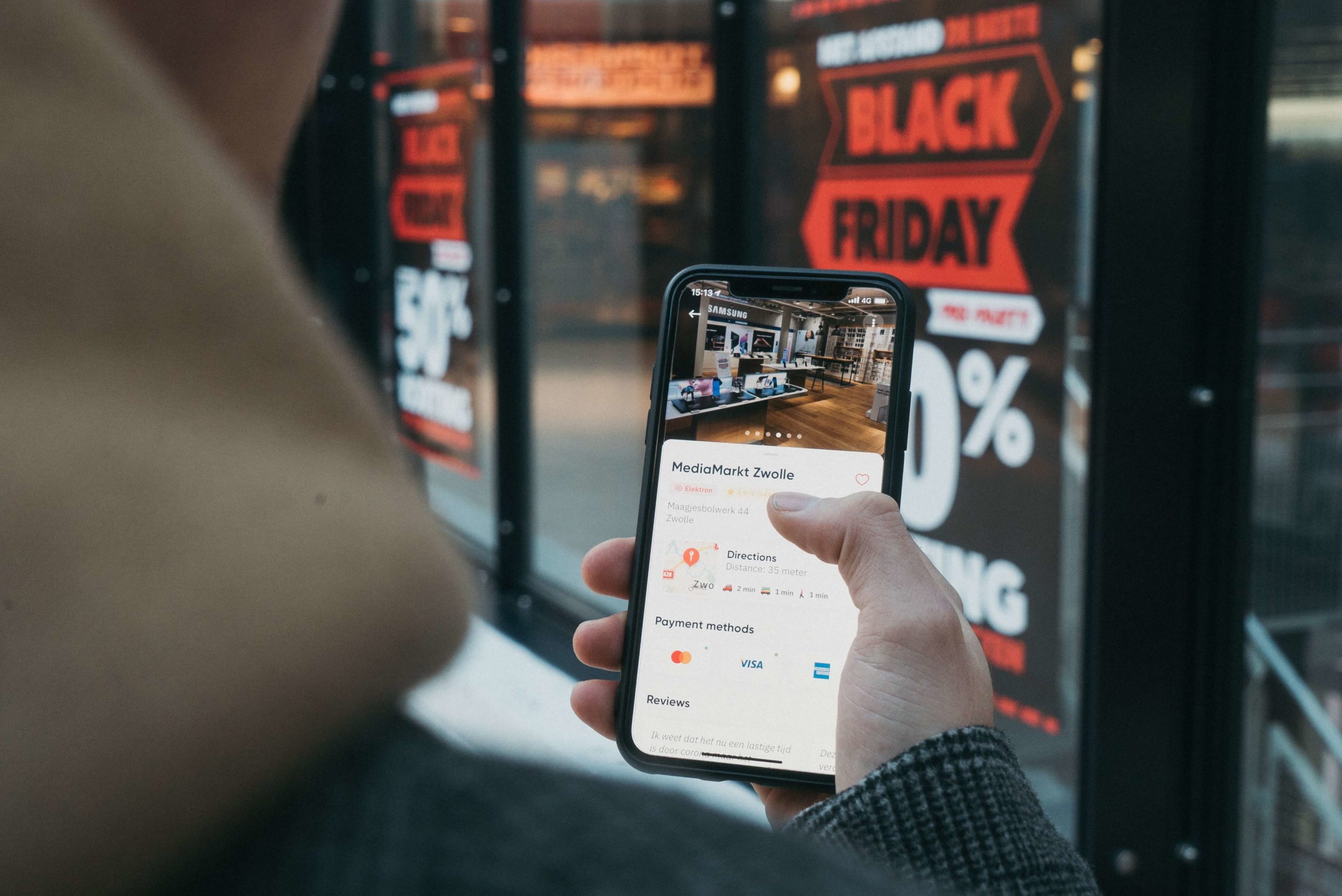It’s that time of the year again; the bustling Black Friday / Cyber Monday stretch of adrenaline-fuelled sales shopping. Since we borrowed them from the US around five years ago, both ‘holidays’ have bled into a fortnight-long extravaganza of pushy advertising, frenzied bargain hunting and no-rules, shopper-on-shopper combat.
The attention trained on the retail world this time of year uncovers some fascinating insights into our shopping patterns, and the increasingly influential role technology is playing in our purchases. Here, we look at some of the things we’ve learned from this year’s retail bonanza.
- Online Batters Brick-and-Mortar
According to a number of polls, we’ll spend more money on Black Friday and Cyber Monday than ever before. But while Black Friday was traditionally, in the US at least, a day for midnight store openings and carts full of discount electronics, most of us are now choosing to do our sales shopping online. No wonder, when you look at some of the viral videos of Black Friday-related anarchy and violence. But the comfort and convenience of online spells further problems for the already beleaguered British high street.
First instituted as a pre-Christmas stimulus, the Black Friday stretch is an important time for retailers. A recent poll from F&C Investment Trust estimated UK shoppers have already spent £19.2 billion so far this year, but they plan to spend a whopping £7.7 billion in this weekend alone.
Retailers need to soak up some of this swirling consumer cash if they’re going to perform well this year. But once again it looks like the money is being piped off to online stores and Amazon, thanks to their increasingly convenient and intelligent platforms.
- Amazon’s Product Push
Amazon is continuing to promote its own products over those of other manufacturers. The retail giant is no longer content with being a digital marketplace, connecting 3rd party retailers with its hoards of regular customers. It wants a slice of the product-making pie for itself.
This year, the company’s Black Friday advertising pushed bargain-browsers towards its own lines of electronics, including its Fire, Kindle and Alexa-embedded Echo ranges. Information about other discounts were almost completely relegated from its main banner ads.
Its machinations in the manufacturing field are well-documented. As this article from Recode explains, the company is increasingly privileging its own merchandise in search results. Meanwhile competitor products like Chromecast and Apple’s Homepod are nowhere to be found. Its Black Friday and Cyber Monday behaviour are just the latest exhibition of its new intent.
- More Power to Electricals
Once again, the bulk of Black Friday and Cyber Monday spending will be on electrical goods like TVs, appliances and games consoles. According to a survey from PWC, 59% of respondents said they’re planning to spend more on electricals than any other kinds of product during this sales window.
Electrical goods are generally more expensive than other sales items, like clothing, linens and beauty products. And they have shorter lifespans than than tools and furniture. Hence, with retailers offering significant across-the-board discounts, consumers are pouncing on the opportunity to upgrade their gadgets.
Interestingly, PWC’s survey also found that most consumers shop Black Friday sales for themselves, rather than using the opportunity to get a jump on their Christmas shopping. This might seem a little self-indulgent. But let’s be honest. How many people think about Christmas presents until we’re well into December and the pressure’s really on?
- Sustainability Makes its Case
As mentioned in our sustainable gift guide, some are beginning to challenge the convention of rabid discount buying, arguing that while its good for certain retailers, its terrible for our planet.
Price comparison site Finder found 30% of 18-35 year olds regretted their Black Friday and Cyber Monday purchases. It seems cut-price bargains are intoxicating our sense of want, causing us to buy things we have no need for.
In that vein, Greenpeace has launched Make Smthng, its official anti-consumerist campaign. The campaign encourages consumers to make, repair or repurpose stuff they already have, rather than buy something new. Greenpeace is also hosting hundreds of international ‘makers’ classes to help people perfect their handiwork.
Both the Make Smthng campaign, and other responsible-shopping movements like #BuyNothingDay are still in their infancy. But we expect to see them gathering steam in the coming years. Maybe, one day, the tide will turn against Black Friday altogether.





